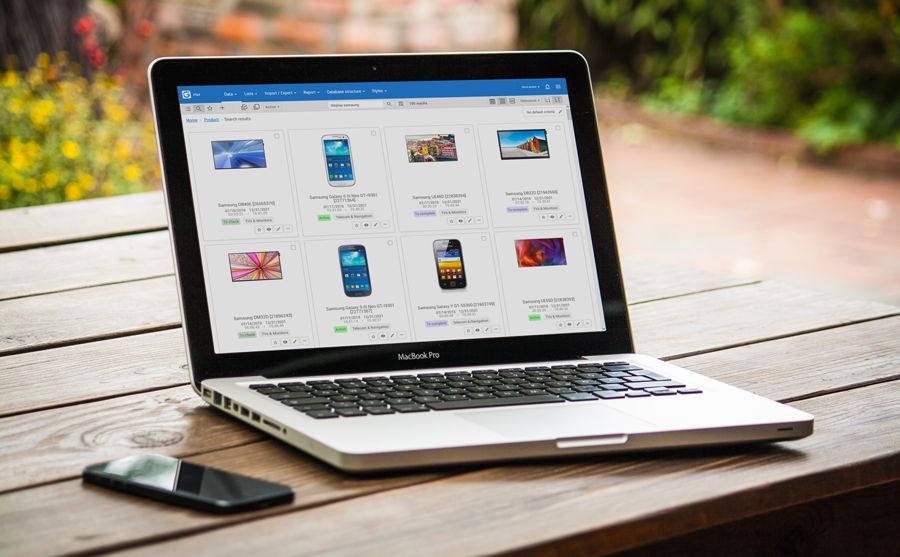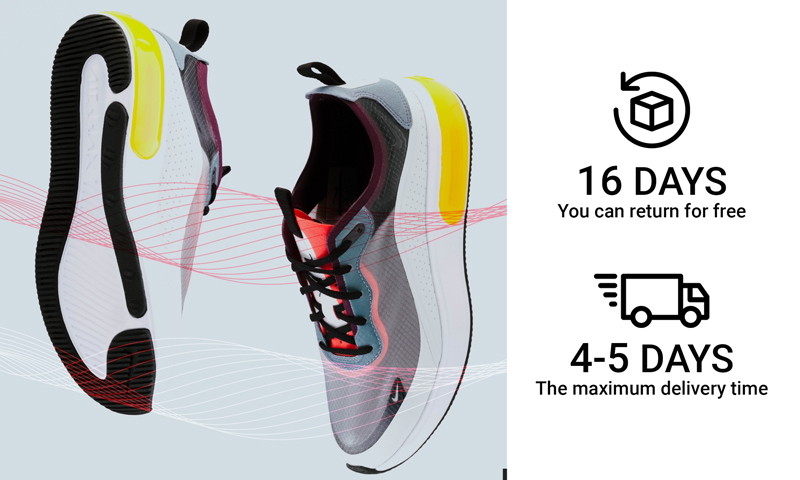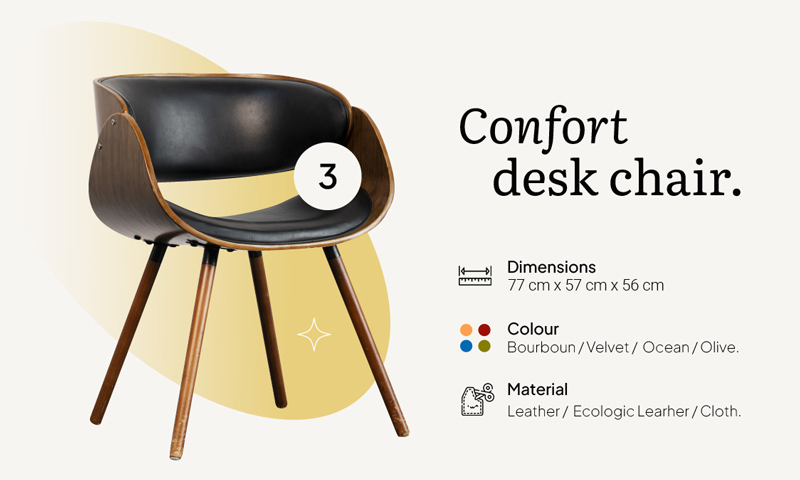
What does PIM mean?
PIM is an acronym for Product Information Management and as its name suggests it is a software solution designed to optimize a company's processes for managing product data. PIM centralizes product information, manages it, and distributes it to all the company's selling and communication channels: eCommerce sites, Marketplaces, social commerce, catalogs… to create an incomparable product experience.
Watch a demo
Why you should be using a Product Information Management solution
Far too often, product data is scattered across different information sources:
ERP
Enterprise Resource Planning
CRM
Customer Relationship Management
MDM
Master Data Management
Files
Excel, XML, Json…
This dispersion of data promotes errors (duplicates, input errors, inconsistencies…) and reduces the overall efficiency of the Product and Marketing teams who waste a lot of time looking for data.
How PIM works
It Centralizes product data
PIM makes managing product information more efficient. PIM interacts with all the other software solutions in the Information System: CRM, ERP, MDM... making it the company's central repository in which all product data is stored.
It Enriches information
Through this unique database, Product and Marketing teams can prepare product information and guarantee its quality before distribution: enrichment, contextualization, optimization...
It Distributes information
When the data is ready, it can be used quickly and targeted to each selling channel: eCommerce, mobile, print, point of sale, social commerce…
Its features
On the market, the features of each PIM vary greatly from one tool to another. However, some features are indispensable for managing product information optimally. These are the essential features of PIM:
Who uses PIM?
By becoming the company's central product repository, the PIM brings together different teams (Marketing, SEO, Product, Sales…) around a unique tool which enables them to work together to create compelling product experiences for their customers. The teams most involved in creating this experience are:
Marketing teams
With PIM, your Marketing teams can enrich product pages to make them more compelling. Through its multi-user management function, each contributor can, depending on their user rights, enrich product information (videos, photos, enriched images…) and approve it before distribution.
Sales teams
With PIM, your sales teams can rely on up to date, comprehensive and verified data to create sales pitches, special offers, tools… to match the preferences and profile of each client.
SEO teams
PIM makes product page SEO easy and simplifies the process of verifying each field before publication: completing SEO fields (meta description, title, URL…), verification of ALT tags, integration of the most relevant keywords…
IT teams
PIM solutions provide many benefits to Information System managers: improvement of data governance, secured transfer of product information, reduction of costs and risks… and enable them to supervise and automate processes and data exchanges within the IS.
eCommerce teams
Using PIM, eCommerce teams can quickly adapt their messages to the demands of each selling channel: image sizes, text lengths, categories, and sub-categories… to provide customers with a shopping experience consistent with the channel they are using.
Purchasing teams
Through PIM, the purchasing department can improve the quality of dealings with suppliers and improve communication for gathering data: suggest changes, reference new products… and speed up the integration of price updates.
Which information does it manage?
PIM enables you to structure all types of data: texts, images, videos, PDF, digital fields, lists of references, URL, attachments… organize product information per product type and manage variations.

Marketing data
Product descriptions, in situ photos, unboxing videos…

Logistics data
Stocks, EAN codes, number of orders, number of deliveries…

Technical data
Sizes, features, colors…

User information
User guides, instructions, diagrams…

Sales information
Product offers, sales pitches, prices…

Regulation information
ISO standards, labels, certifications…
The benefits of using PIM
Implementing PIM is a real competitive advantage for a company: businesses having invested in a PIM solution reduce their product returns by over 23% and significantly speed up the time to market of their products (4 times faster on average).
Benefits within the company
Improved quality
Better control over the quality of product information and reduction in errors.
Operational efficiency
Increased operational efficiency among the teams and less time spent looking for product data.
Improved collaboration
Organization of collaboration between different contributors to optimize data enrichment.
Consistency
Better control over product information in the implementation of an omnichannel strategy.
Uses for PIM
PIM (Product Information Management) facilitates the implementation of powerful strategies to help businesses achieve their objectives quickly.
Omnichannel strategy
PIM optimizes your management of product information on many distribution channels (Marketplaces, stores, mobile apps…) and allows you to deploy new channels quickly to increase sales.
International development strategy
PIM helps businesses to develop their eCommerce activity internationally and to satisfy the expectations of potential foreign buyers: consideration of the local culture, translation into the relevant language, adherence to local standards…
Print strategy
PIM solutions allow businesses to develop their sales on print distribution channels and to guarantee a high level of product information quality on all their marketing tools (brochures, flyers, product datasheets, catalogs…).
SEO strategy
PIM solutions enable businesses to optimize the SEO of their product pages, to integrate pertinent keywords into each field, and to rank well in SERPs (Search Engine Result Pages).
PXM strategy
Using PIM, your teams can provide customers with consistent, customized, and high-quality product information: HD photos, targeted sales pitches, compelling marketing descriptions… at every stage of the shopping journey. PIM gives you comprehensive control over the product experience (PXM) to create a strong link between customer and product.
PIM at the core of the Information System
PIM (Product Information Management) solutions are not designed to replace the existing solutions in your Information System. Through its connectors, PIM retrieves all the product data contained in your systems (SKU data, sales pitches, product photos…) and federates your teams through a unique tool.
PIM et ERP
Your ERP optimizes the global management of your company's activities and has different modules for specific uses: human resources, finance and accounting, logistics… PIM and ERP are two different solutions which can be used together to design enriched and detailed product pages.
PIM and CRM
Composed of a collection of systems, the CRM centralizes, automates, and optimizes all the interactions and relations between a business and its customers throughout their lifecycle (acquisition, development, loyalty…). Used together PIM and CRM allow you to customize and enrich interactions with your customers.
PIM and MDM
The MDM solution centralizes the company's master data and provides each different activity with a global view over data. PIM and MDM have similar uses and shared features: centralization, synchronization, task automation…
PIM and PLM
The PLM optimizes the management of all data generated through the product's lifecycle (design, development, production…) and simplifies the product modification process. Used together, PIM and PLM enable businesses to better match their product offer to customer expectations.
Choose the right solution: things to look out for
It is important to use the right criteria to compare the different PIM solutions on the market and to choose a PIM that is both powerful and adapted to your company needs: Essential PIM criteria to focus on:
Features
Ergonomics and ease of use, digital asset management (DAM), context management…
Costs
Licence, hosting and utilization, training and support, implementation…
Compatibility with the existing IS
Interaction with any other software solutions in the IS, configurable import and export features, webservices API…
Find the right solution partner for you
For a successful PIM project, the team supporting your business must be experienced and have solid customer references and an in-depth knowledge of the problems and constraints of your industry.
You should also ensure that they can work efficiently with your teams: availability, responsiveness, remote communication methods…








